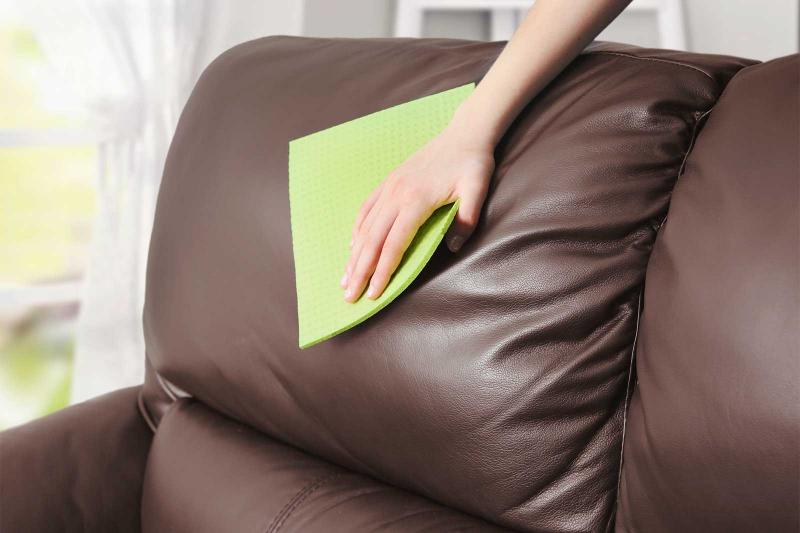It might be difficult to tell the difference between real leather and fake leather when buying a new couch, especially with the improvements in synthetic materials. To be sure you are getting a long-lasting, premium item that will not fade, it is crucial to understand how to recognise real leather. Knowing the distinctions between real and imitation leather is important whether you’re thinking about buying a new couch or contemplating leather sofa cleaning in Singapore. Here’s how to distinguish real leather couches from imitation leather.
Recognising Different Types of Leather
Genuine leather is tanned to retain and improve its natural properties. It is created from animal skins, usually cowhide. It is renowned for its comfort, toughness, and distinctive look, all of which get better with age. There are several varieties of genuine leather, such as full-grain, top-grain, and corrected-grain leather.
Synthetic or fake leather, commonly referred to as faux leather, is created using plastic-based materials, including polyvinyl chloride (PVC) and polyurethane (PU). It can imitate the texture and appearance of real leather, but it is not as strong or as natural-looking as genuine leather. Compared to real leather, faux leather is frequently less costly and requires different maintenance.
Visual Examination
By looking at the surface texture, you can easily distinguish real leather from fake leather. Genuine leather has a distinct character due to its inherent flaws, which include wrinkles, scars, and grain variances. Conversely, because faux leather is made, it usually has a more homogeneous and consistent texture.
Upon closer examination, one can also see and feel the natural grain pattern and uneven pores of genuine leather. The artificial, machine-made grain pattern of faux leather frequently looks too flawless and consistent. If required, check the surface with a magnifying lens to look for these minute variations.
Test with Smell
The tanning process imparts a distinctive and very fragrant scent to genuine leather. This fragrance is difficult to recreate and is frequently characterised as earthy or woodsy. On the other hand, because of the ingredients used in its manufacture, faux leather smells chemically or like plastic. One easy way to tell if a sofa is real is to smell it.
Feel and Touch
Real leather often reacts more strongly to temperature, feeling cool to the touch in colder climates and warm to the touch in warmer ones. Because it is synthetic, faux leather does not respond to temperature the same way and often feels the same no matter what the outside temperature is.
Softness and Flexibility
Real leather is elastic and supple; over time, it gets softer and more malleable. Genuine leather will stretch and display natural wrinkles when pressed. On the other hand, faux leather is not as flexible; it is frequently stiffer and less tactile.
Test for Water Absorption
A quick test for water absorption may be used to determine if leather is real. Track the material’s reaction by placing a tiny drop of water on its surface. Since genuine leather absorbs water gradually, it will brown. Contrarily, faux leather will either float on the surface or run off rather than absorb the water.
Labels and Price
When determining whether a couch is constructed of real or fake leather, price can be a key determining factor. Because the tanning process requires a lot of effort and expensive ingredients, genuine leather couches tend to be more expensive. A leather sofa is probably constructed of imitation leather if it seems exceptionally cheap.
Read the manufacturer’s or retailer’s product labels and descriptions carefully. The terms “full-grain,” “top-grain,” or “genuine leather” are frequently used to identify genuine leather specifically. Terms like “PU leather,” “leatherette,” “bonded leather,” or “vegan leather” might be used to refer to faux leather.
Conclusion
Understanding product specifications, doing sensory testing, and visual inspection are all necessary to distinguish real leather couches from imitation leather. You can tell the difference between real and synthetic leather by looking at the texture, pores, scent, and flexibility. Further confidence may also be obtained by carefully reading labels and taking the price into account. These pointers will assist you in making sure that you are working with real leather, improving the appearance and durability of your furniture, whether you are purchasing a new couch or keeping up with leather sofa cleaning in Singapore.

